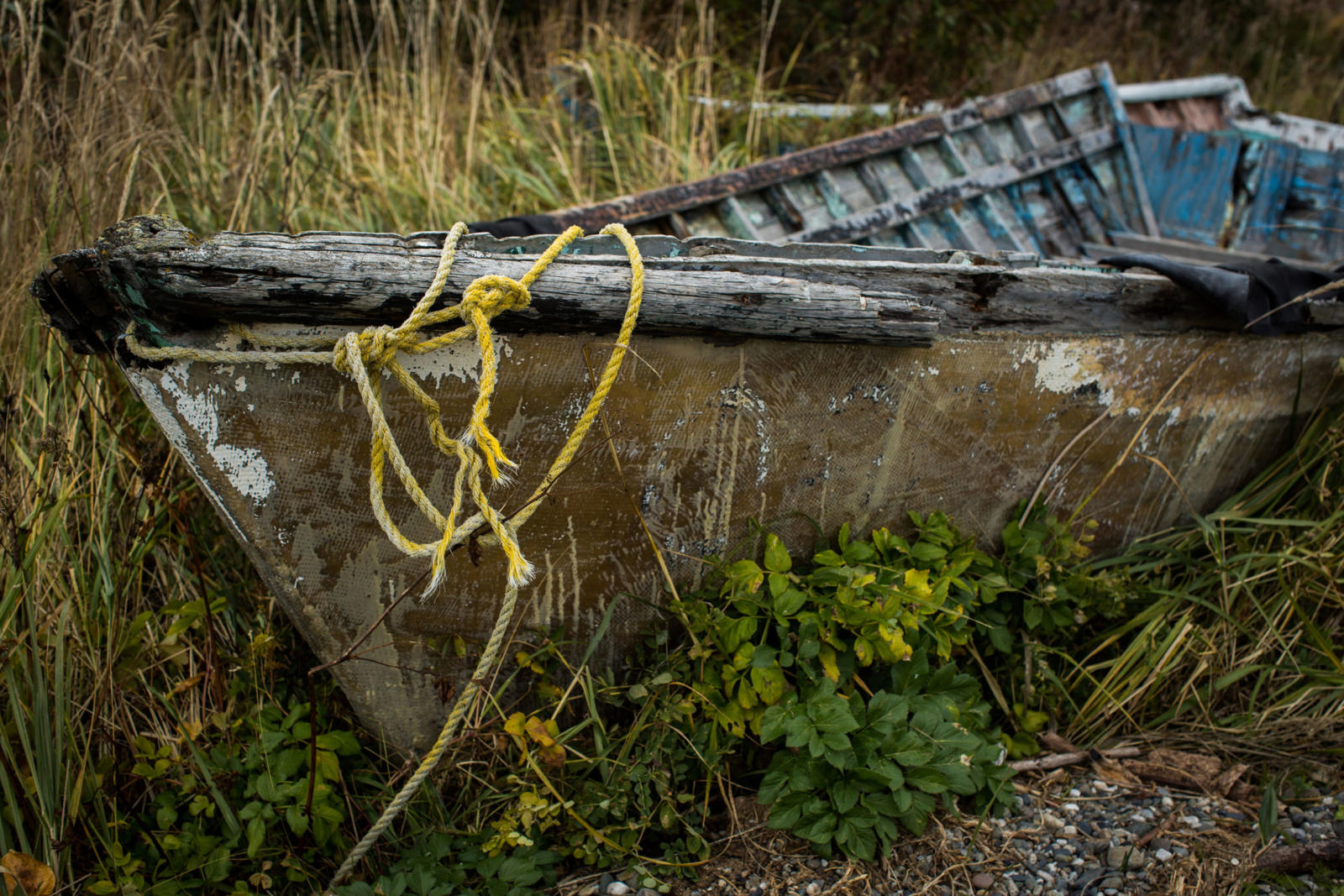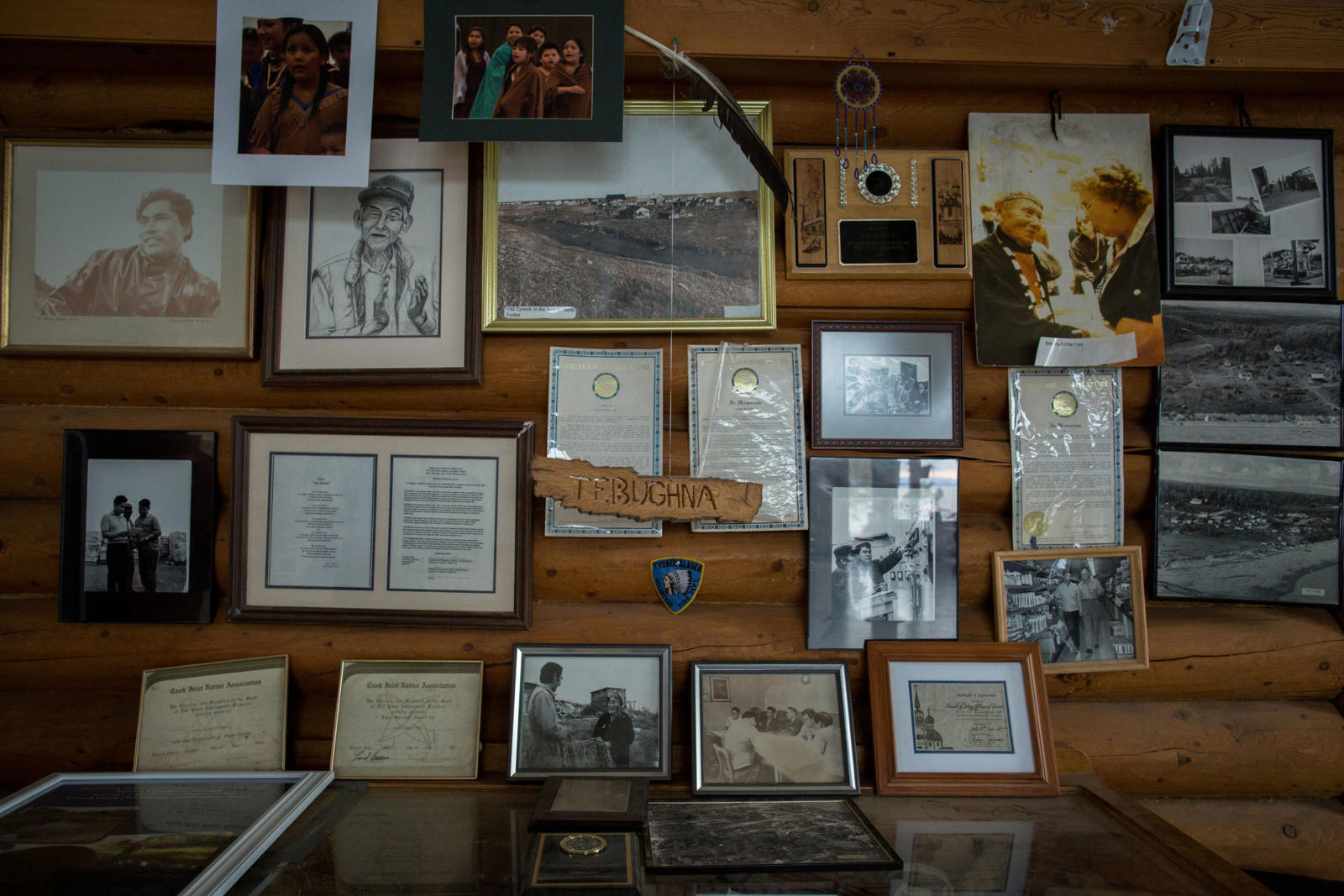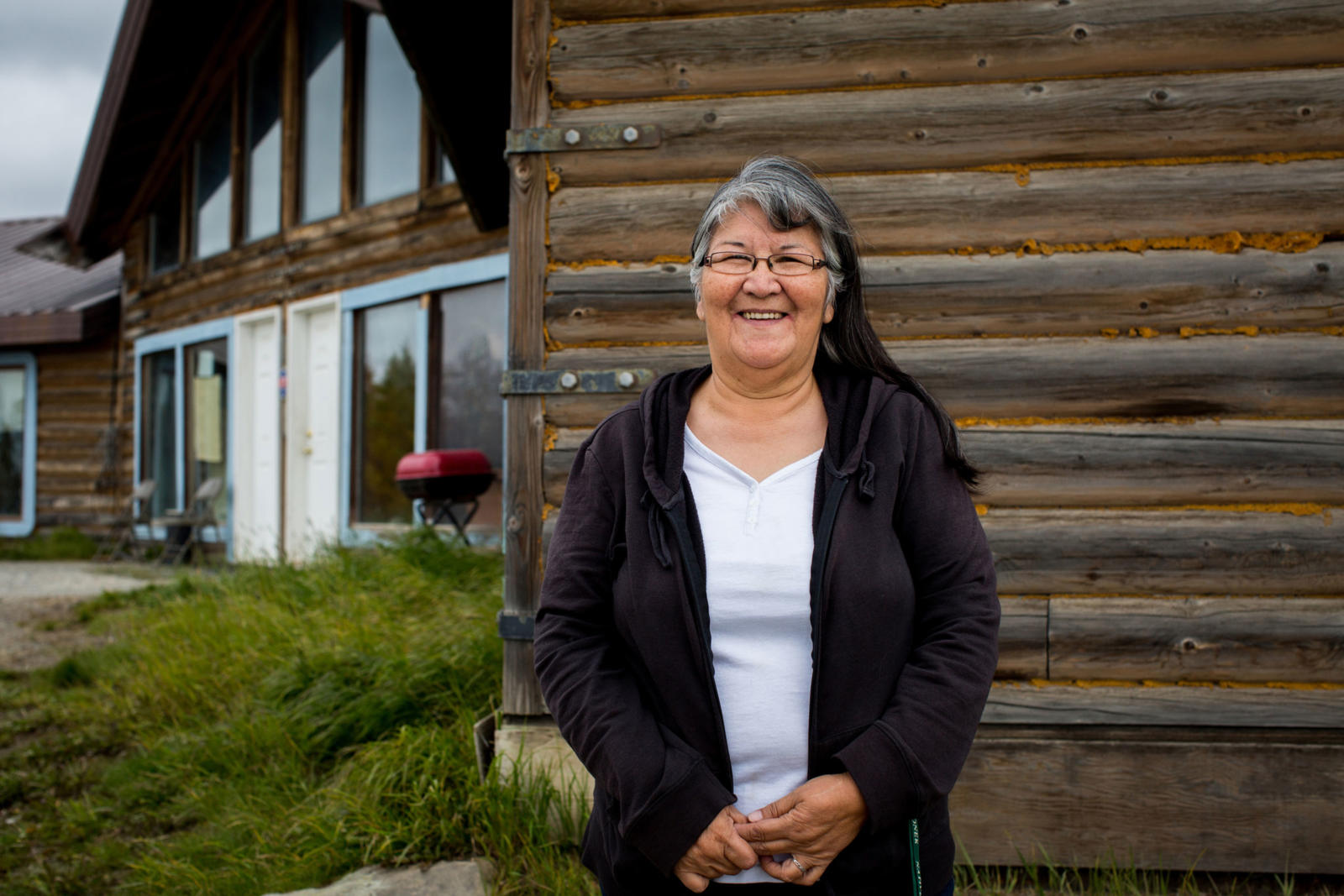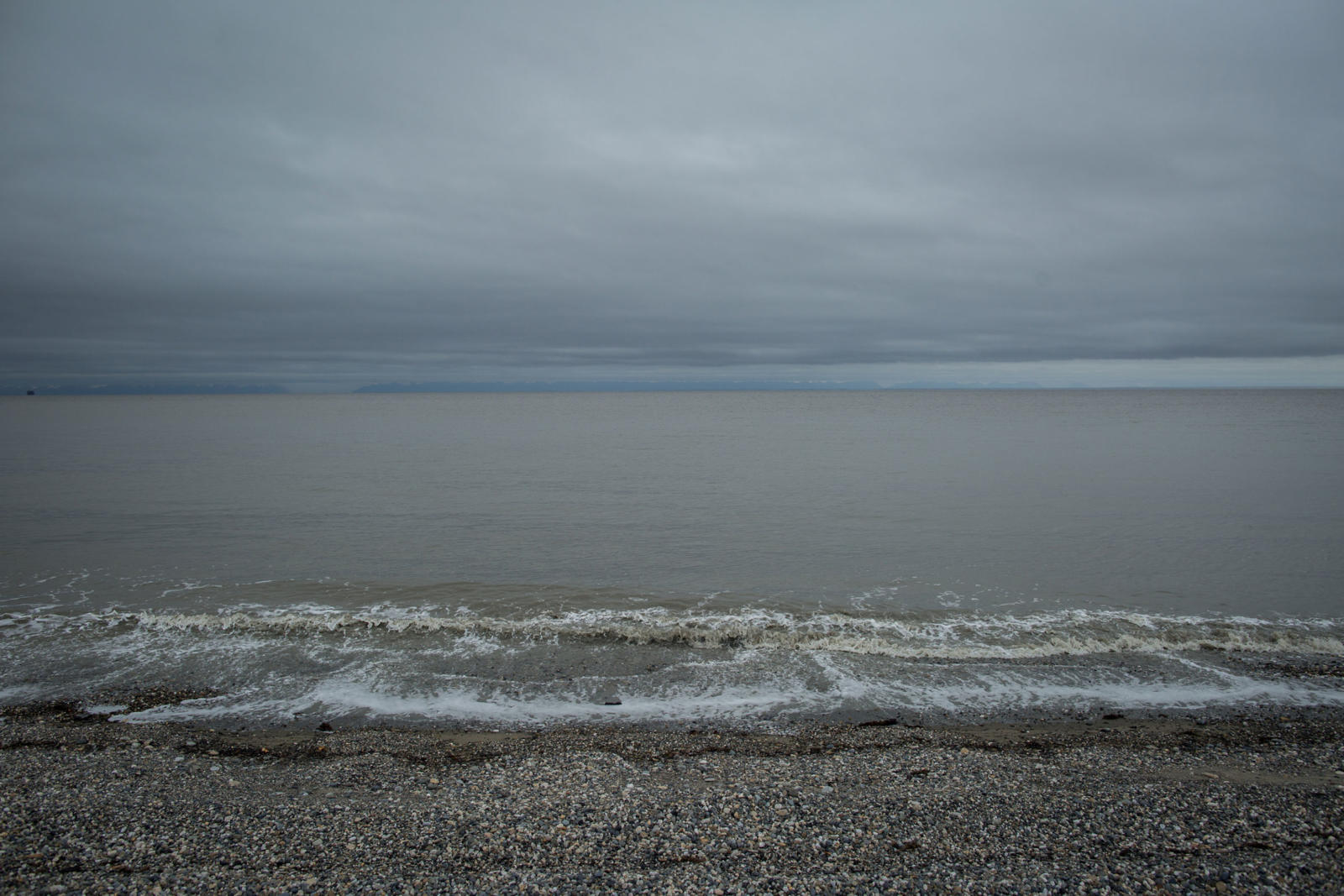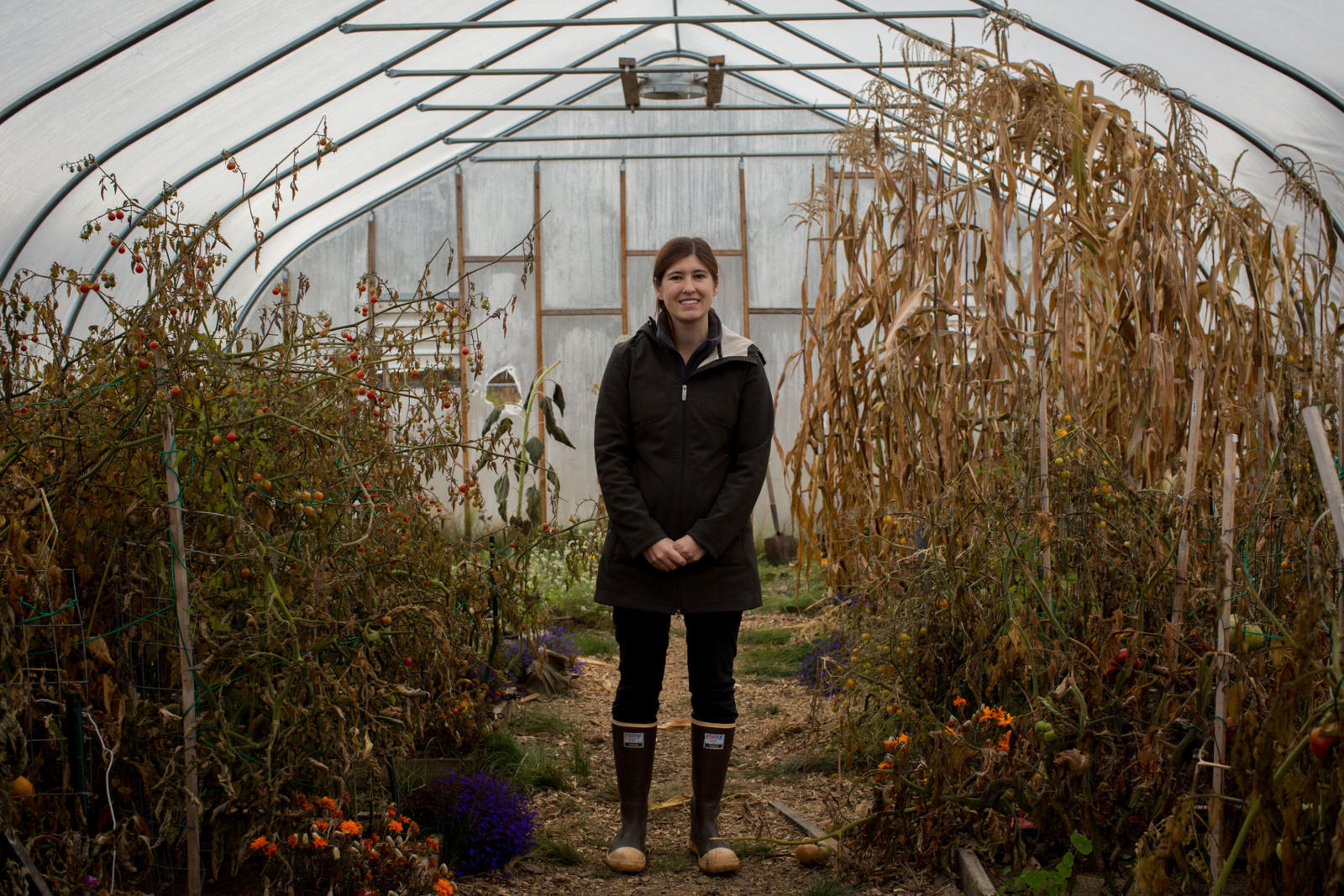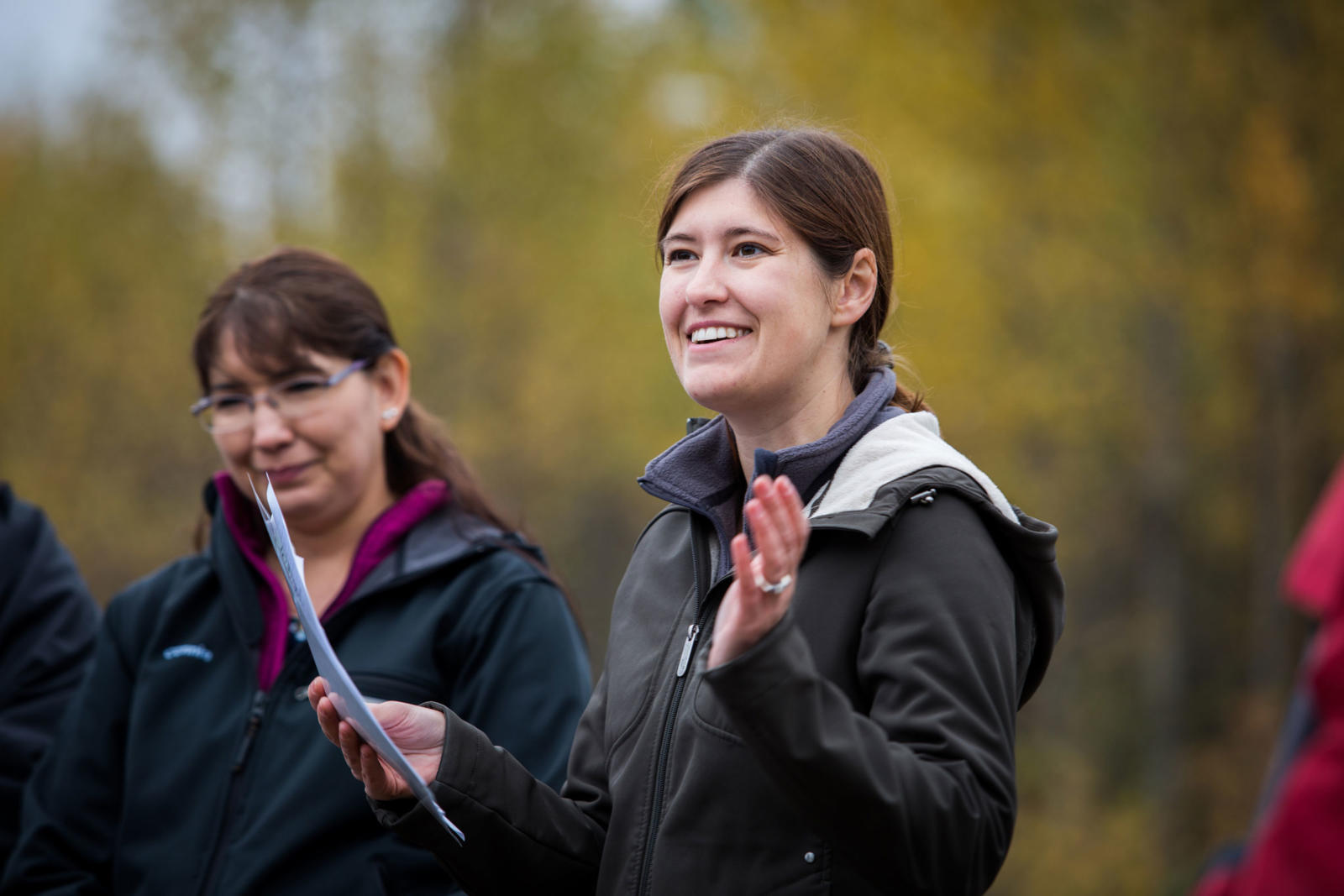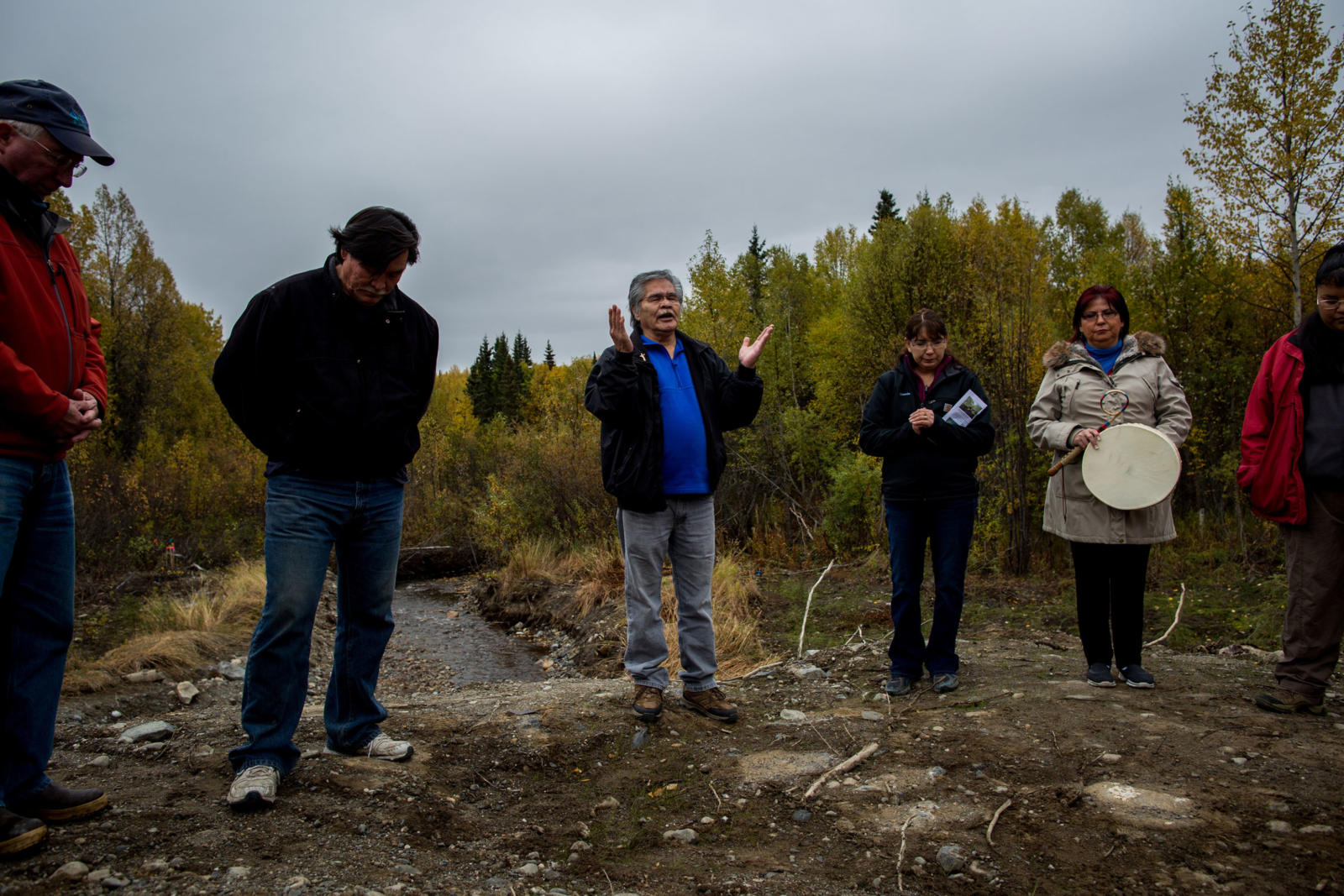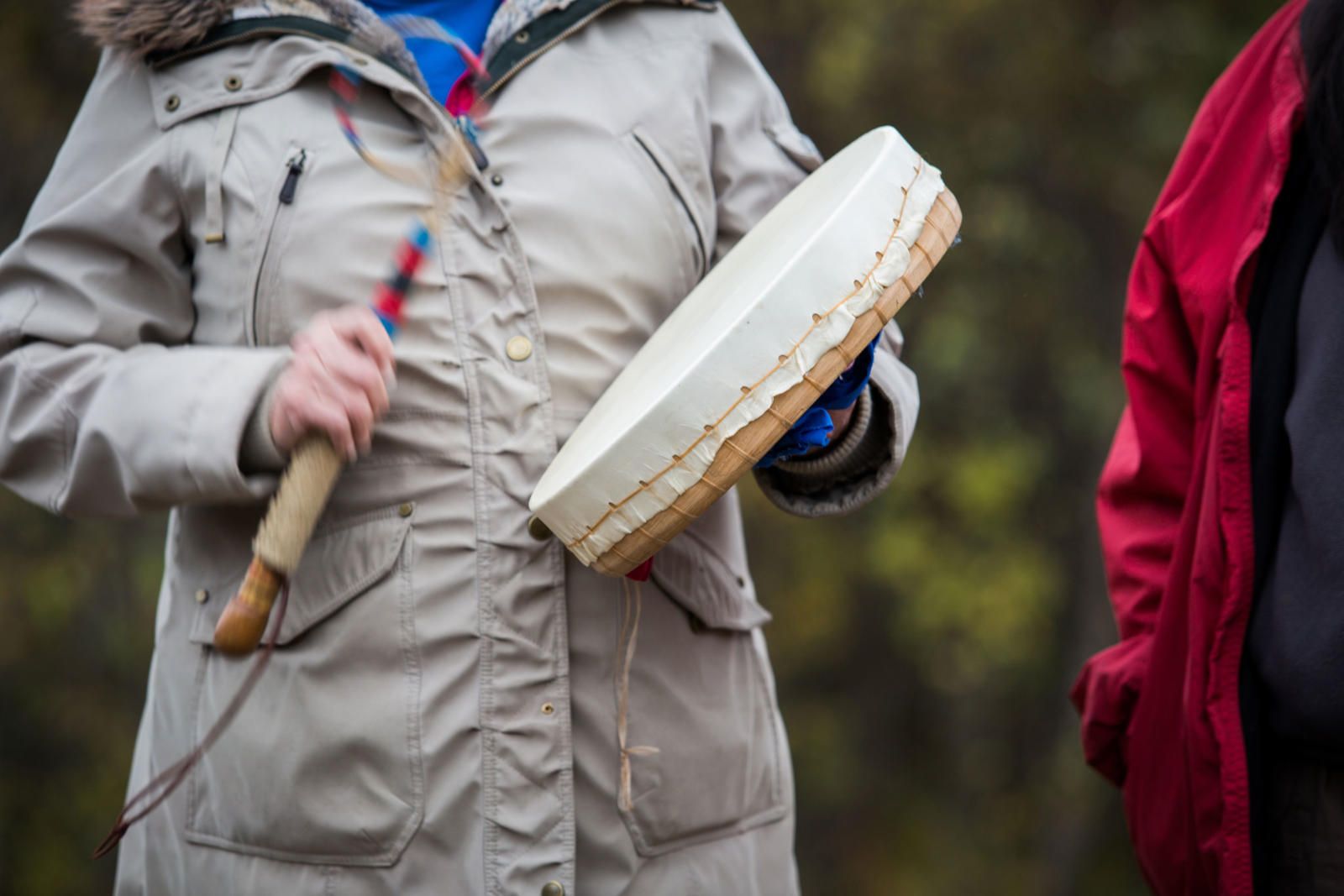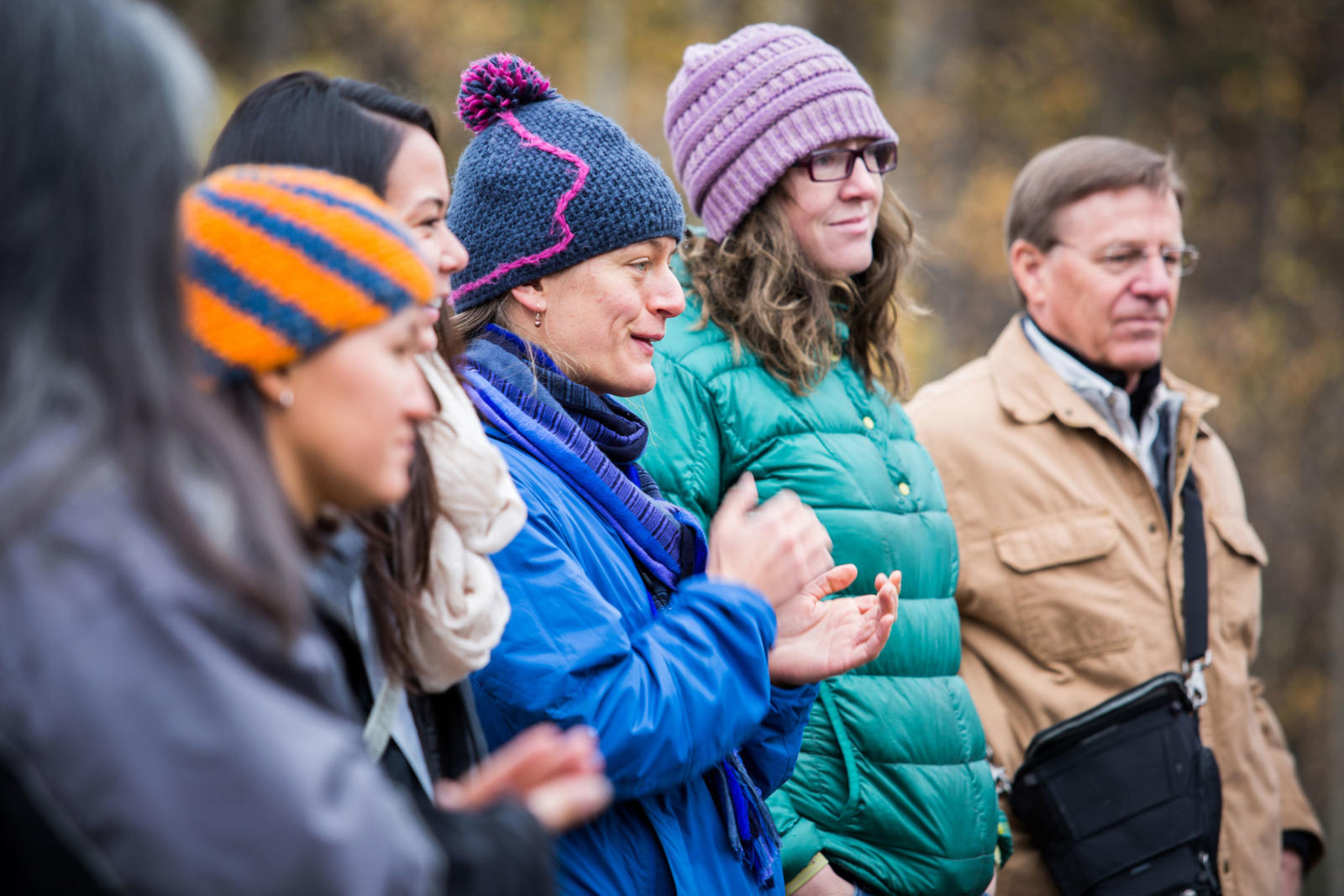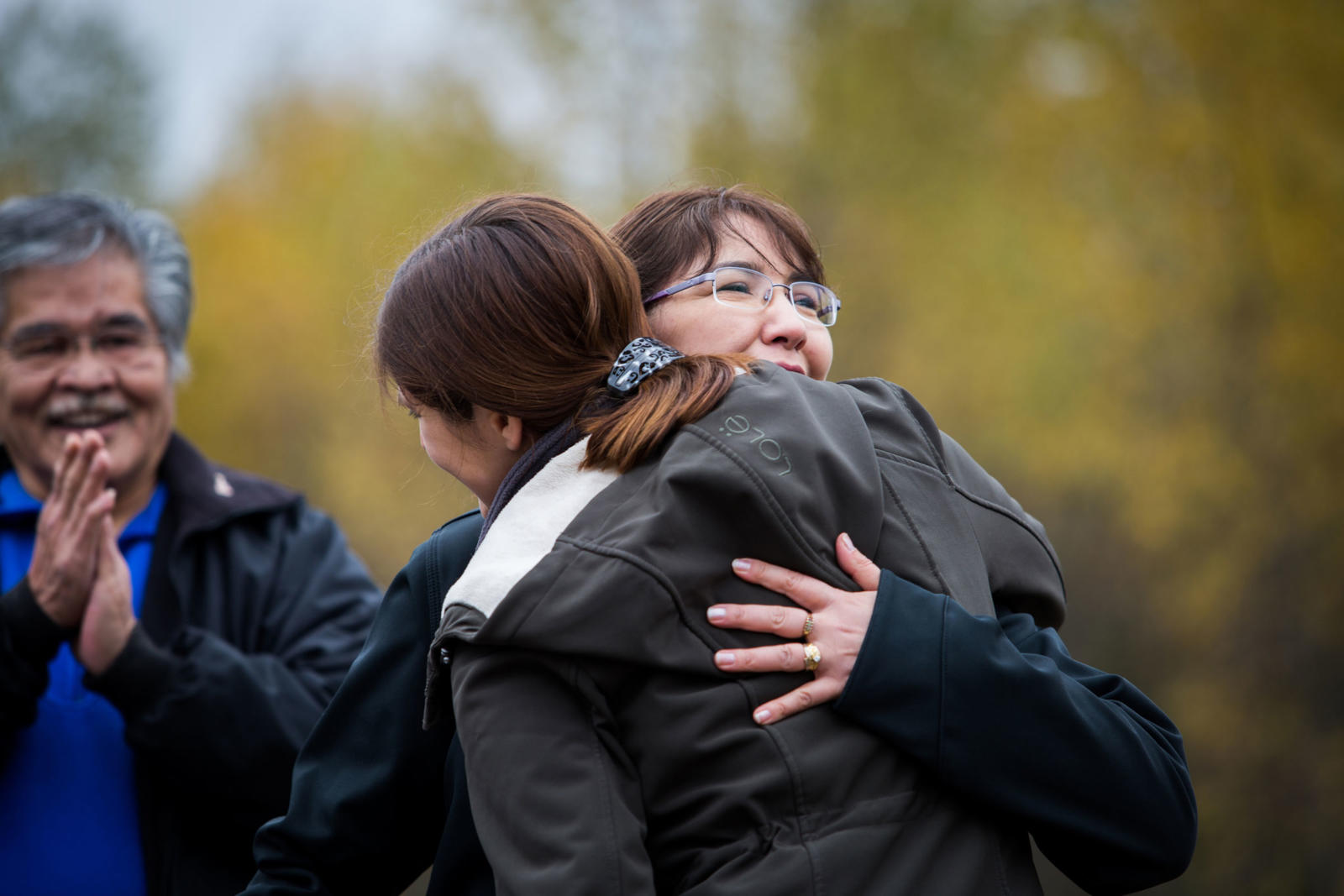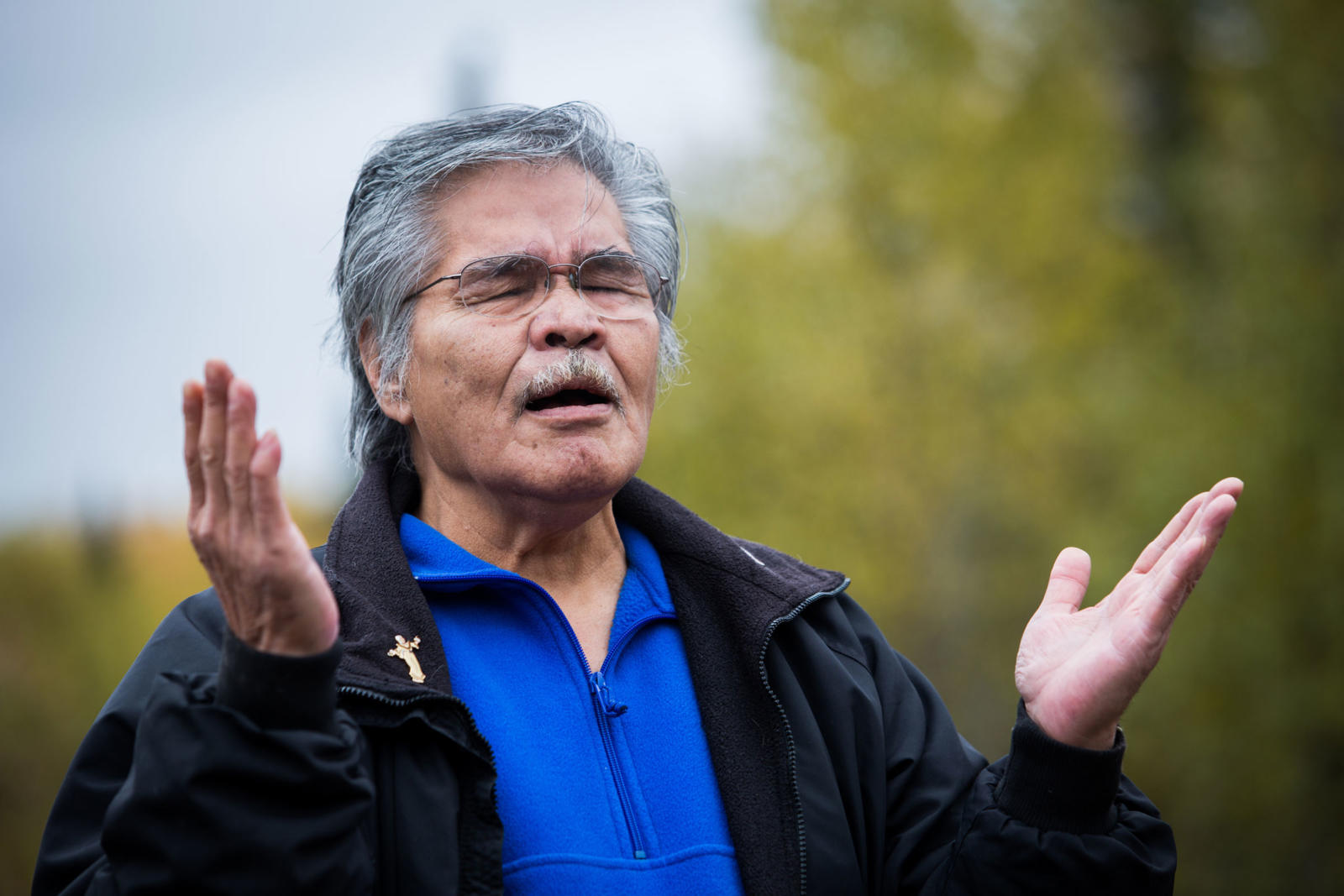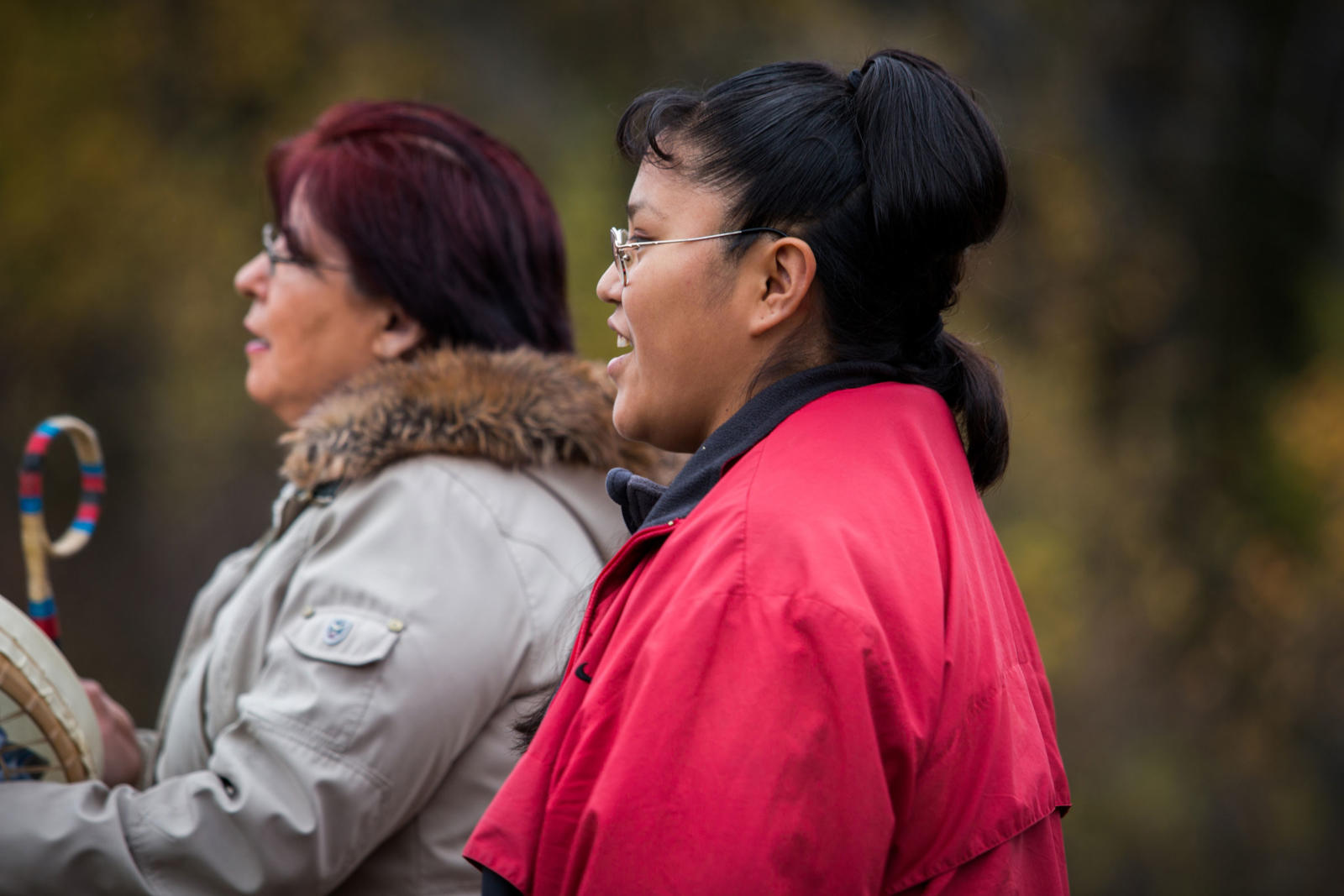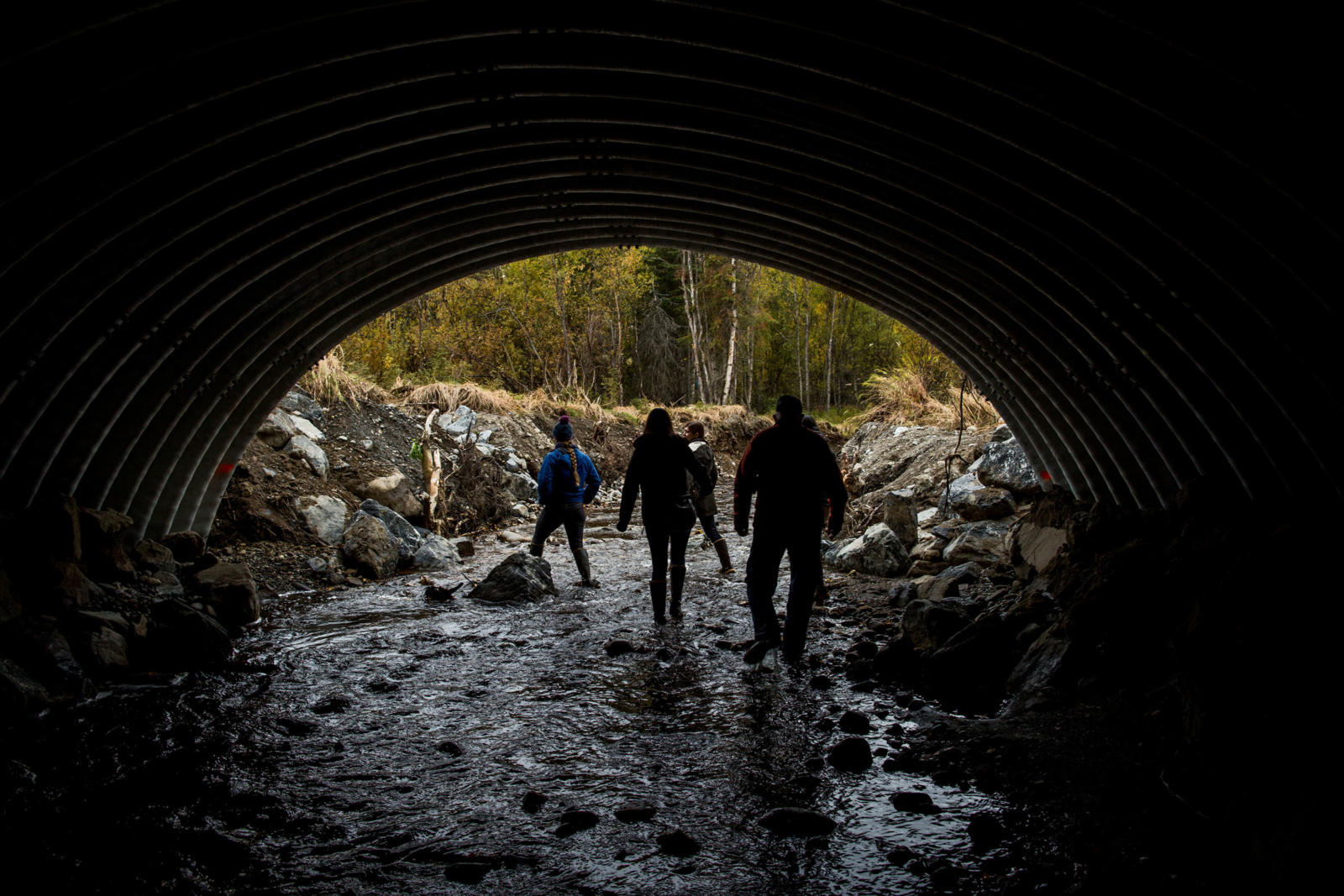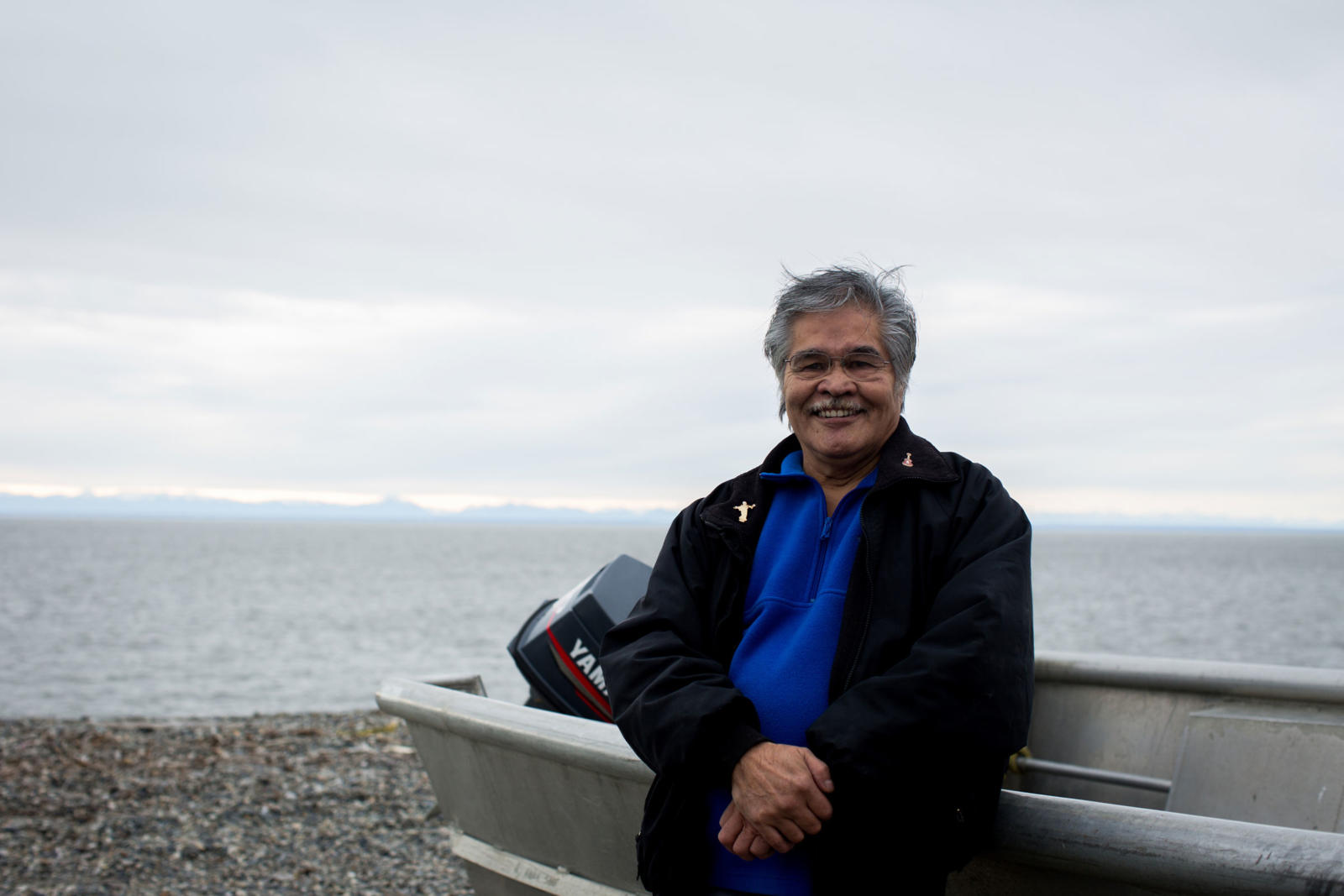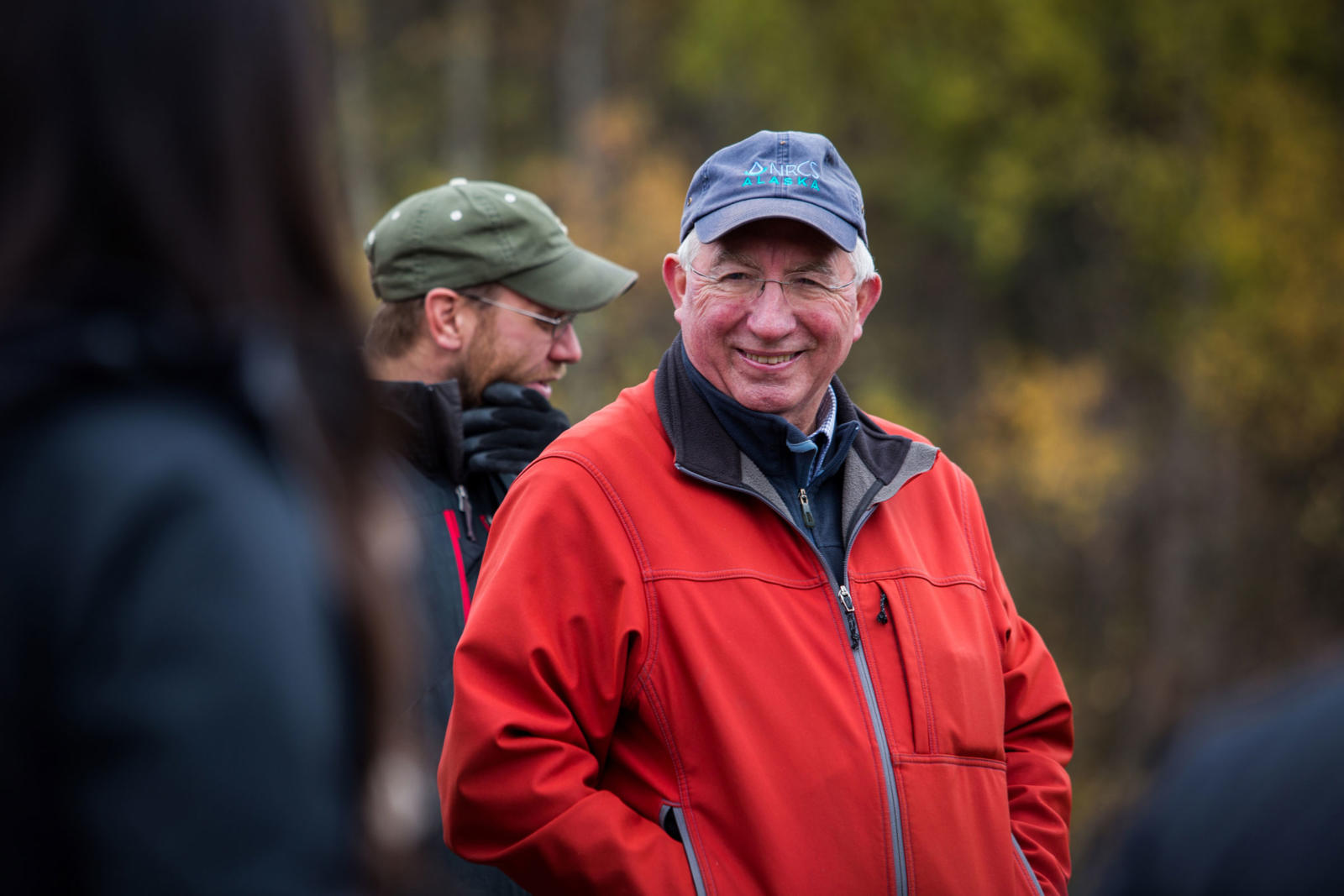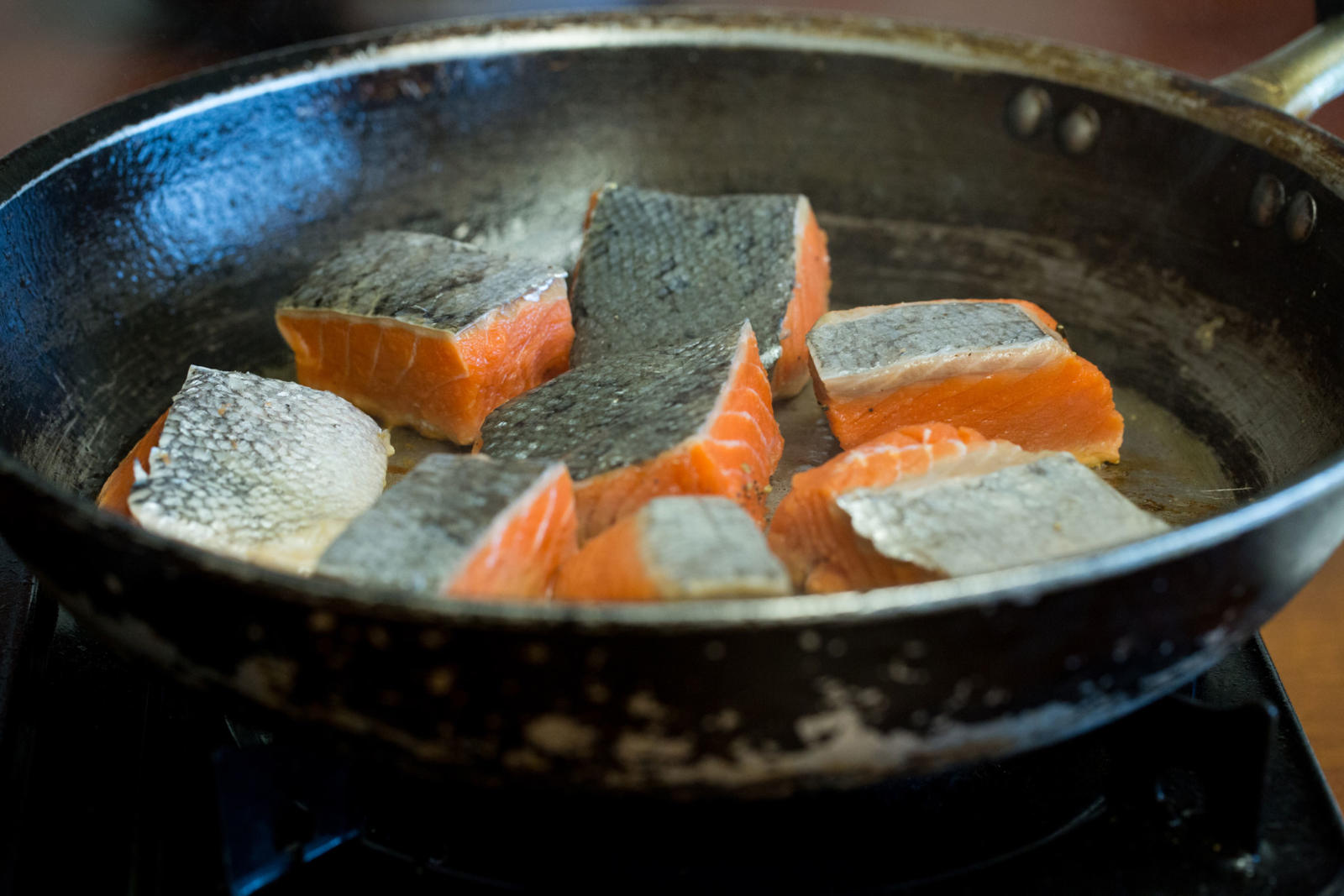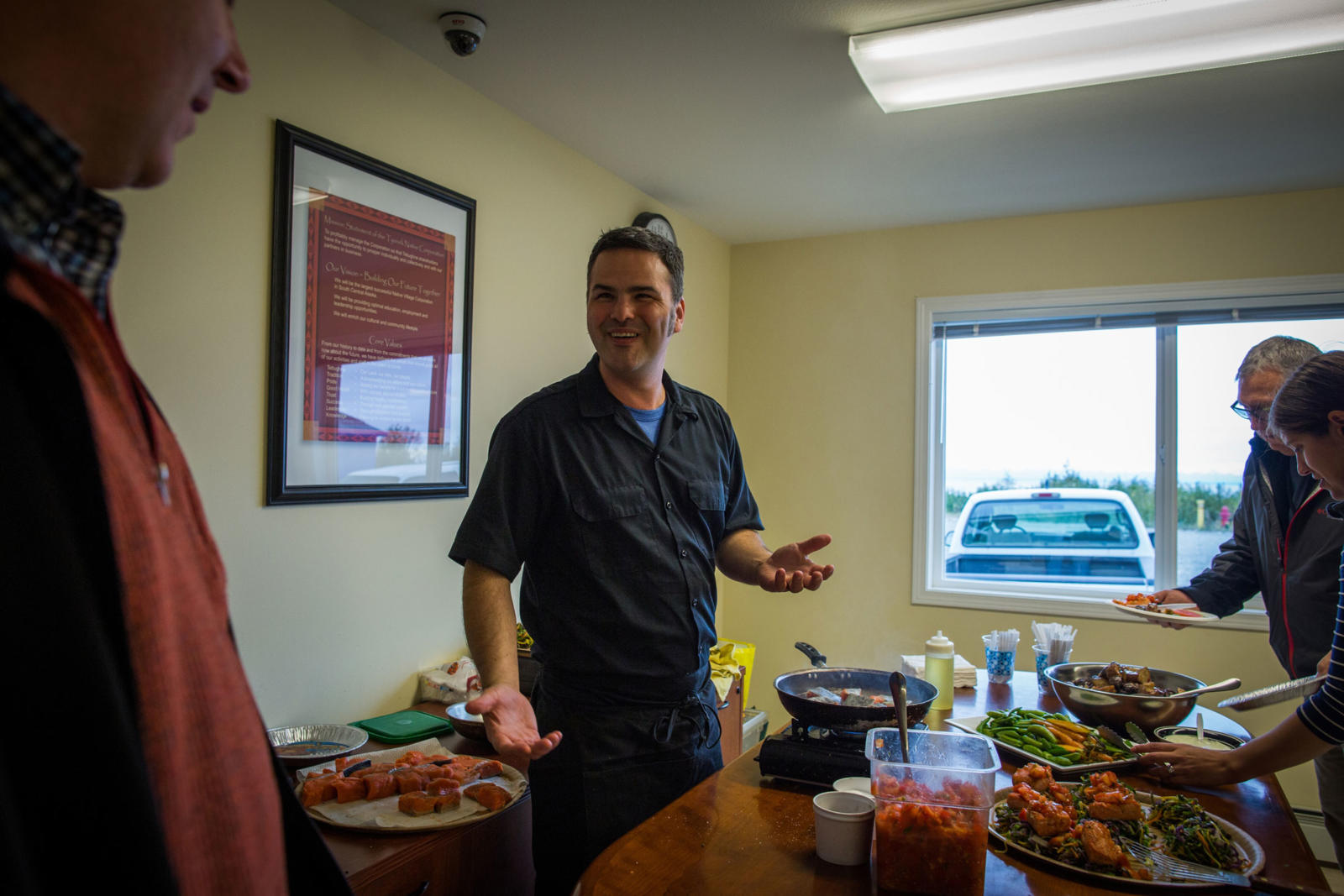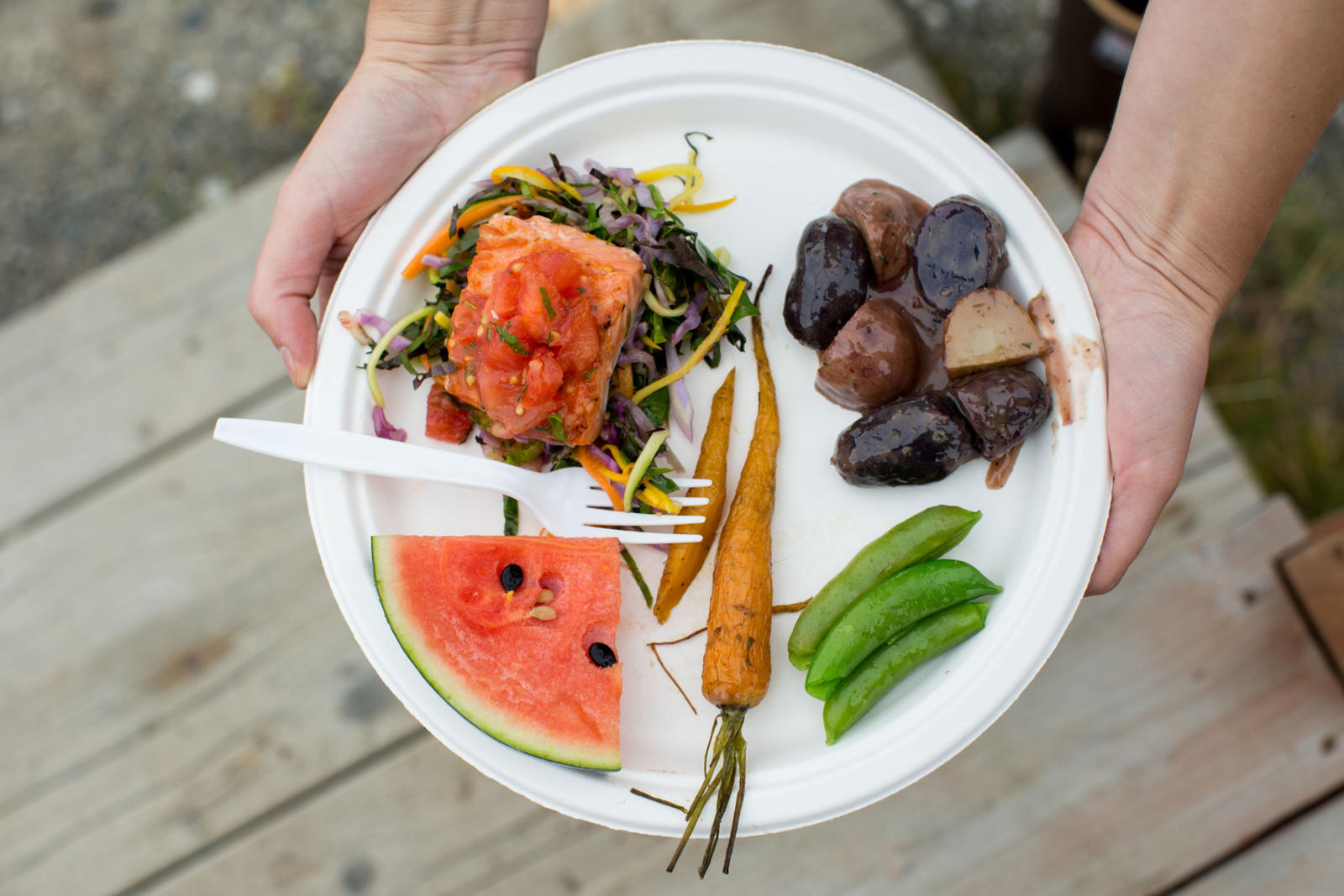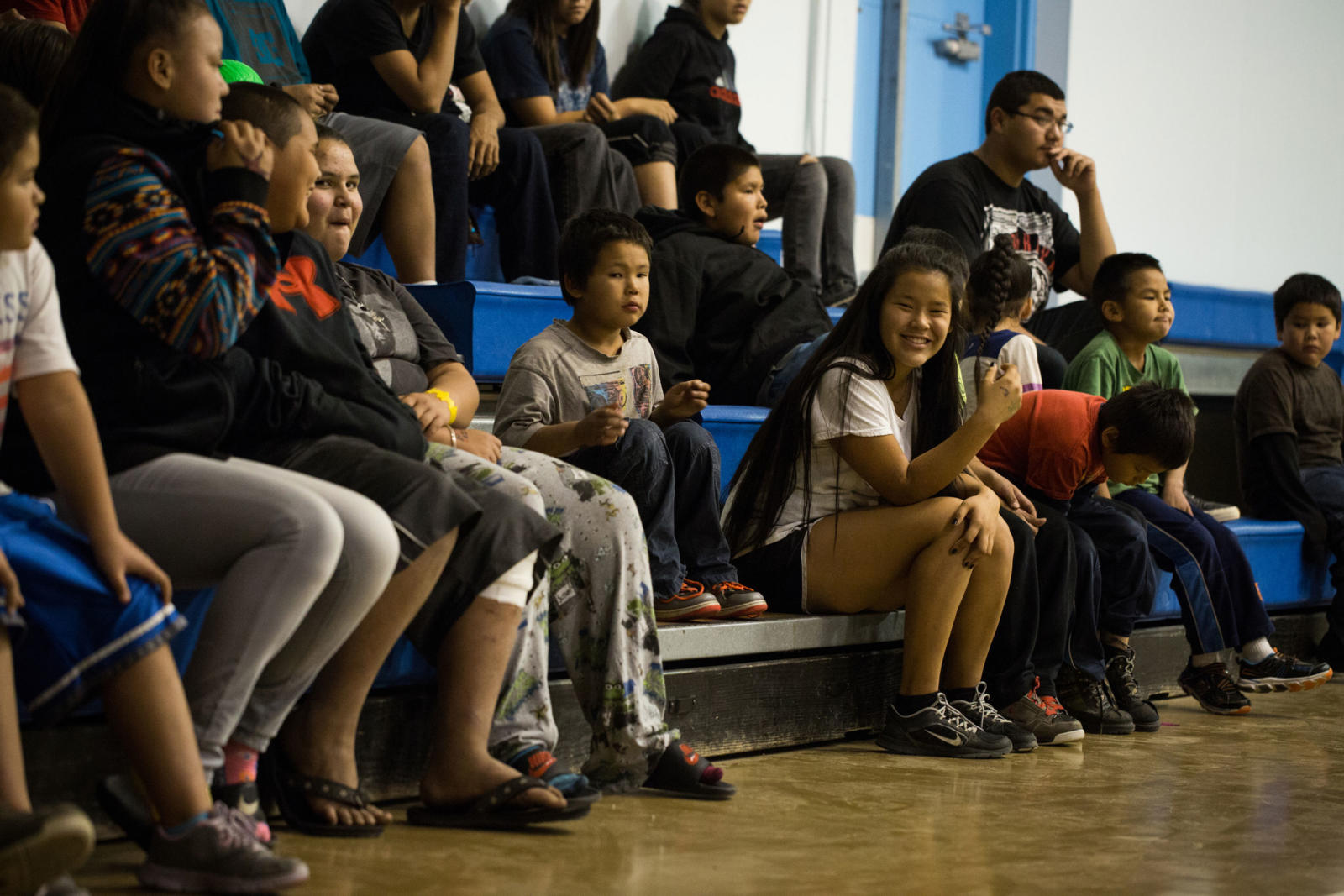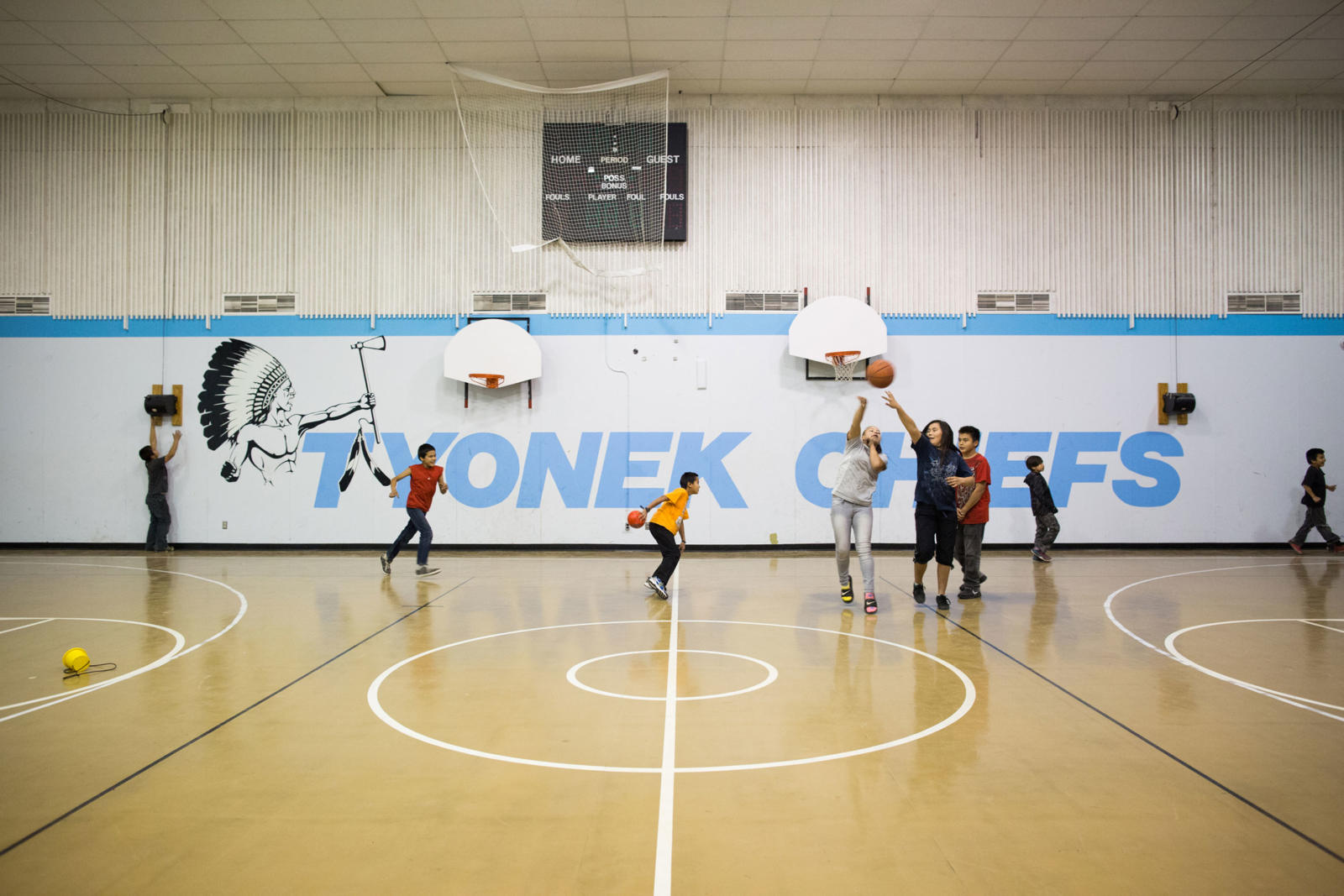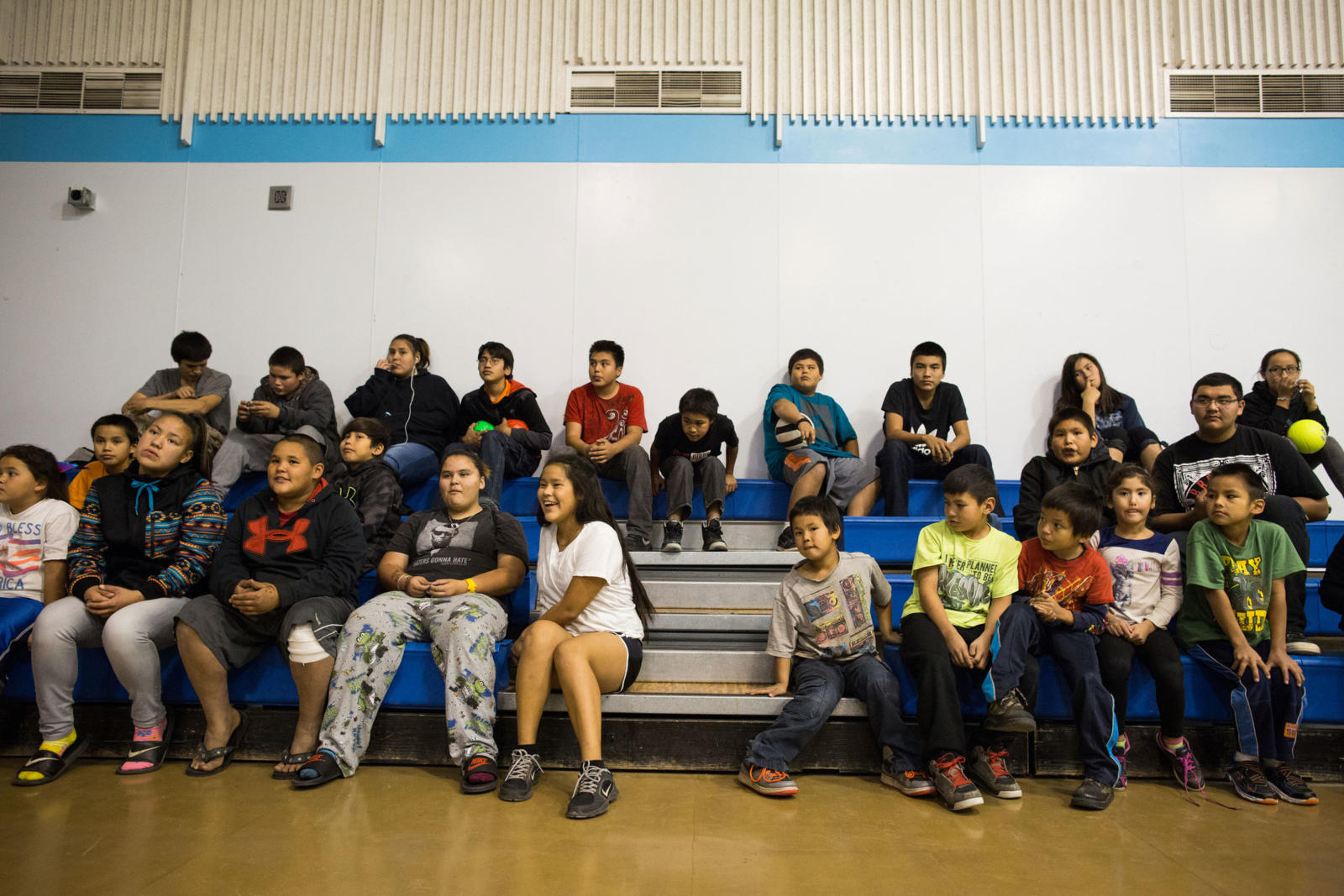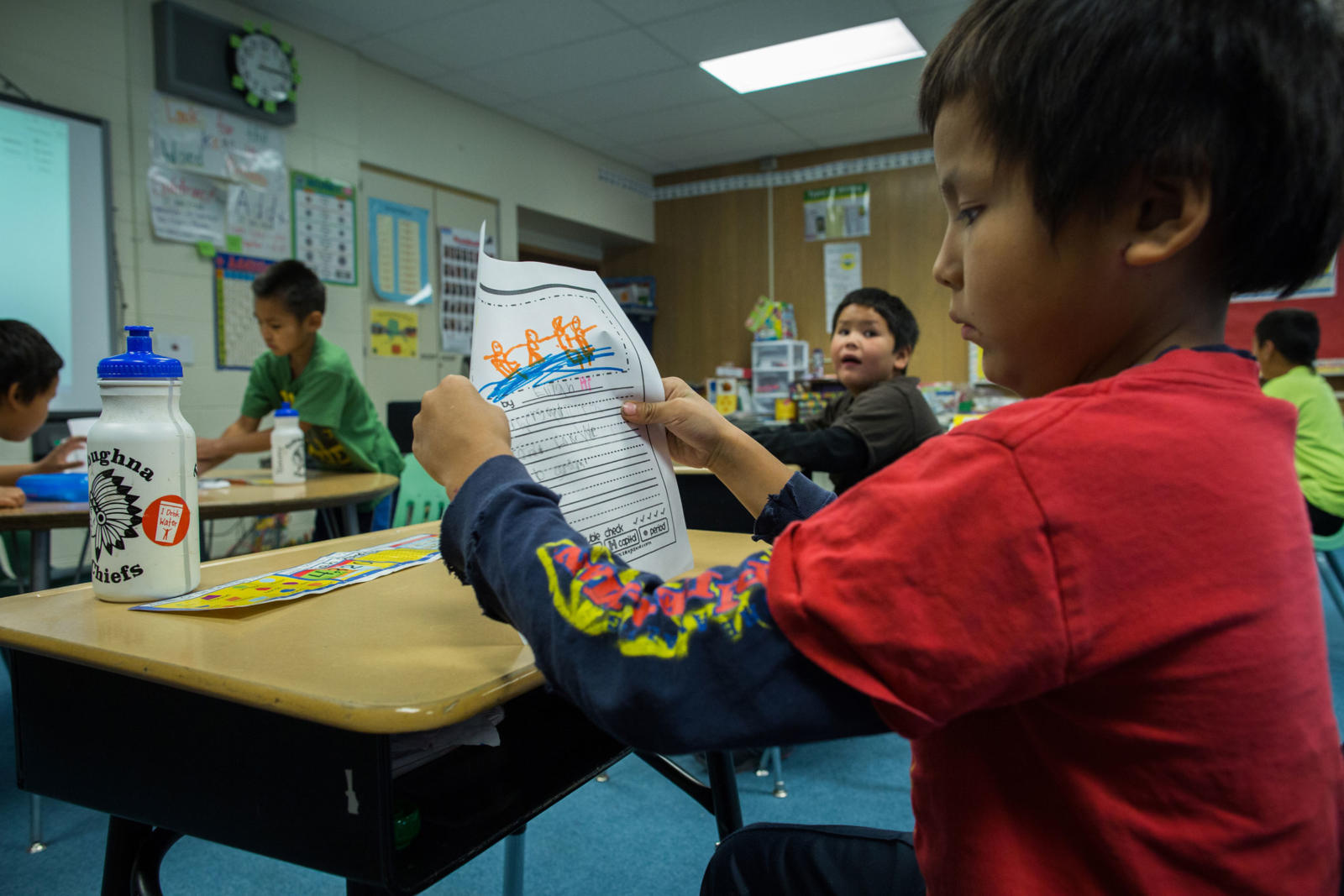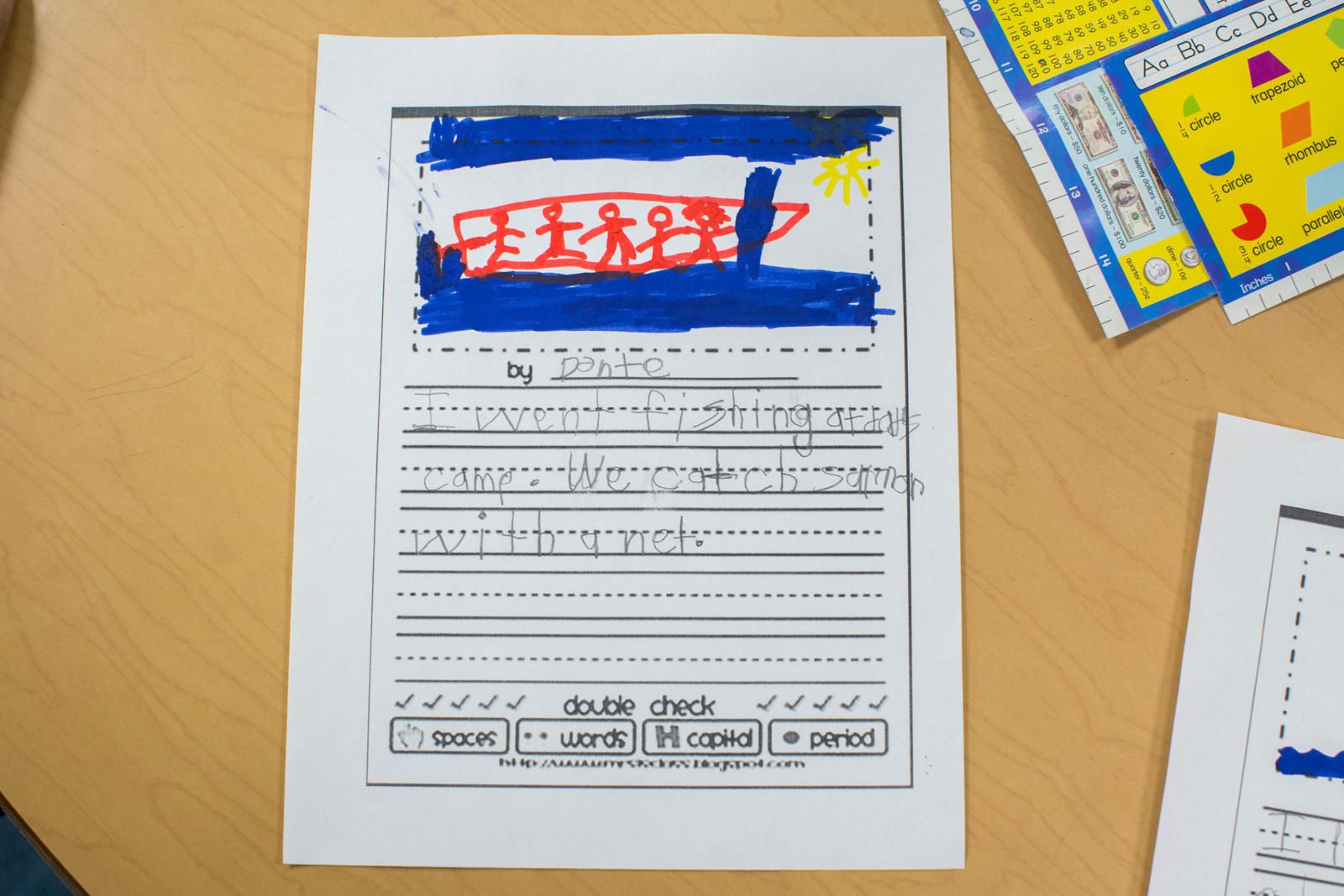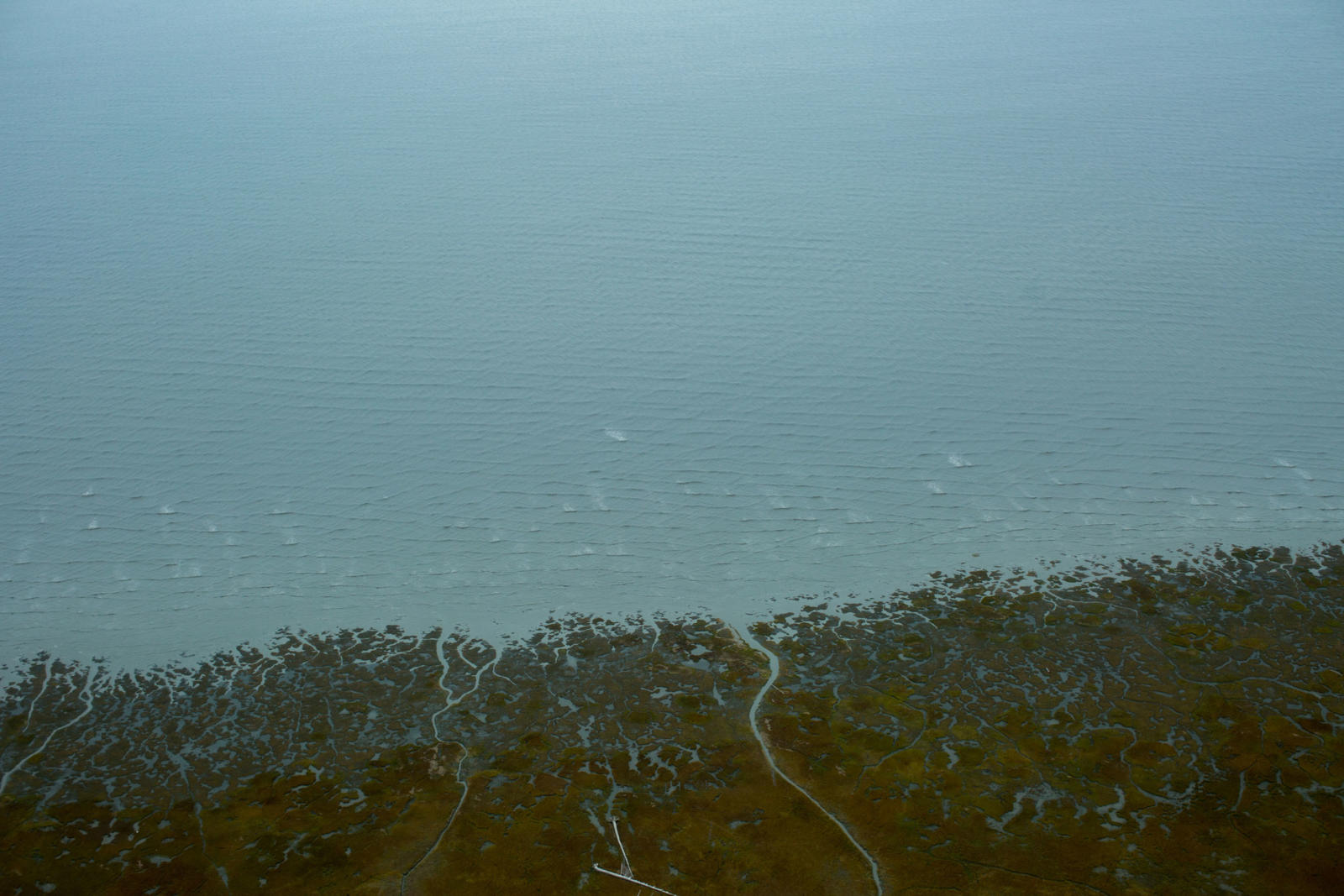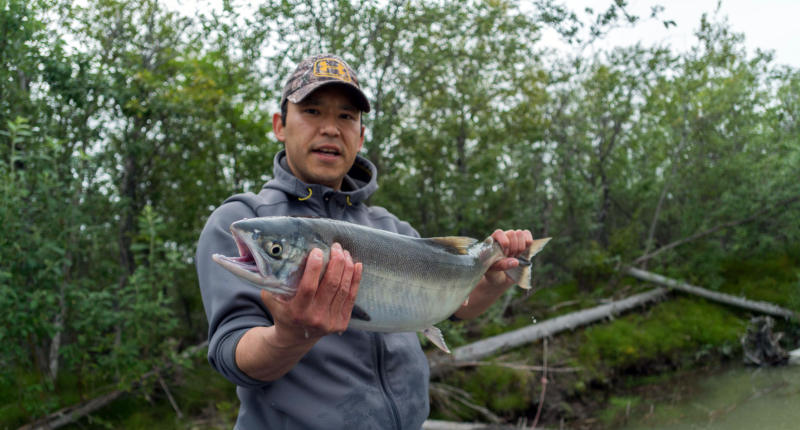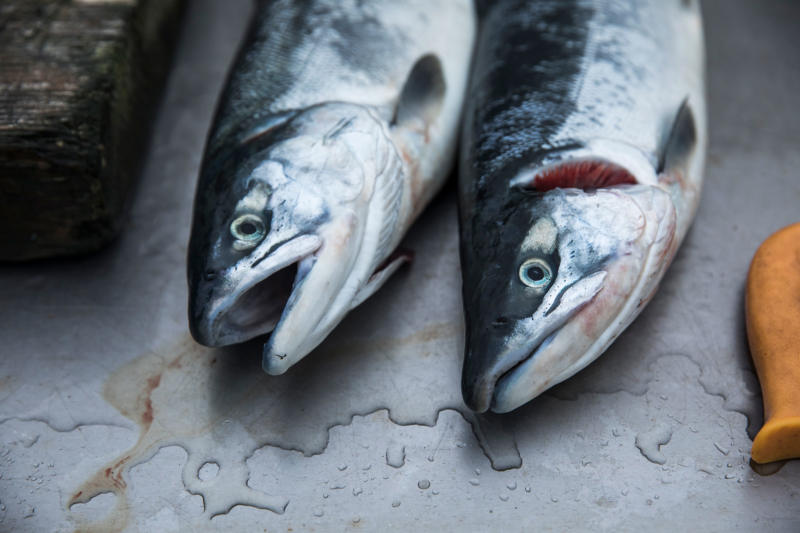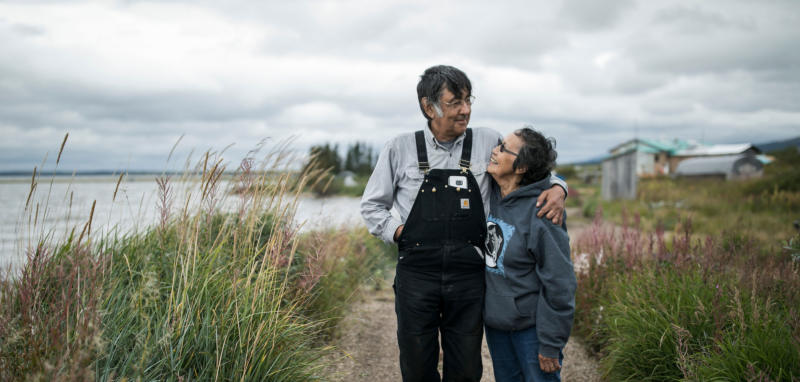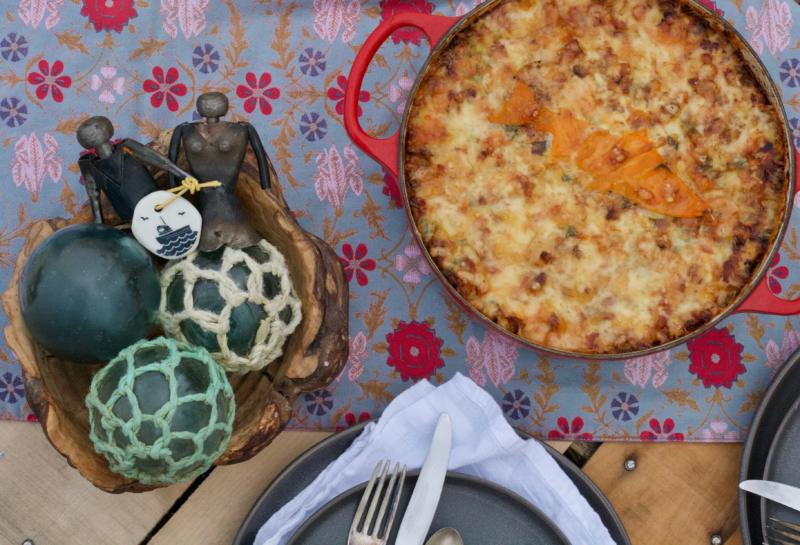On September 25, 2015 a small group gathered in Spernak Airways’ building at Anchorage’s Merrill Field for a flight to Tyonek. We loaded in promptly at 7:30 a.m., the sound and feel of the Cessna 207 living up to the name “Skywagon.” The sun was just rising over the Chugach Mountains, bathing everything in a lemony-gold light as we taxied and took off. A near-lifelong resident of Anchorage, I’d never taken off from Merrill Field, seen the city or inlet from this perspective, and never been to Tyonek.
“I’ve walked all over this land,” said Native Village of Tyonek president Al Goozmer. “Mostly on snowshoes.” He told me this as we stood, with a dozen and a half people, on the side of a gravel road somewhere between Tyonek and Shirleyville. Beneath us was a new, 28’ wavy steel culvert built to prevent terrible, driver-stranding washouts and, as Goozmer had announced to the gathered group, to “enhance our ability to harvest salmon.” It was the reason for my first plane trip to west Cook Inlet, and our day’s celebration.
